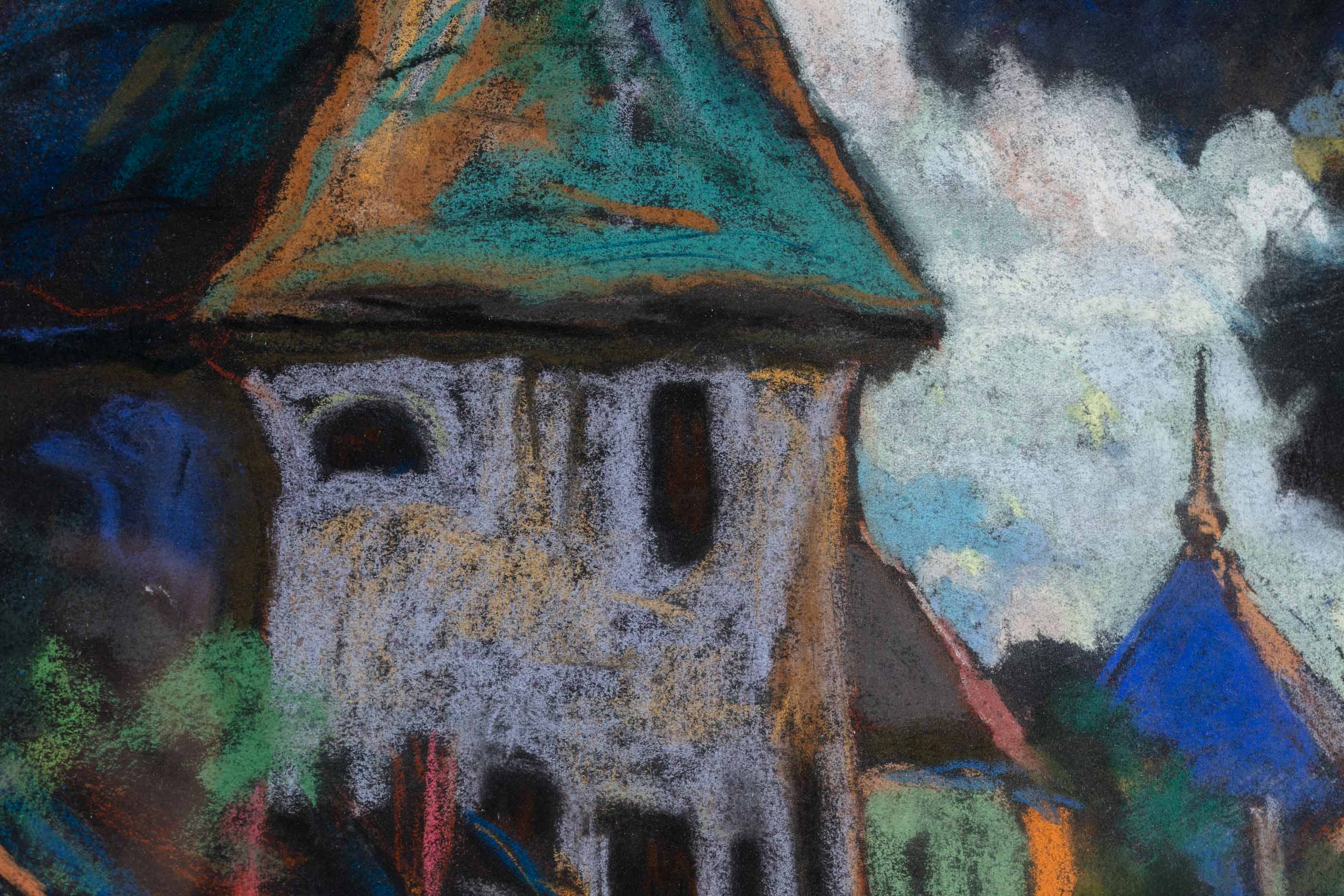Tailor’s Bastion of Cluj, 1933
Tailor’s Bastion of Cluj, 1933
pastel, paper, 59 x 49 cm
The Rococo was the first period in the history of art in which the pastel technique stood out as a distinct way of making art. In this phase, unsaturated colors were predominantly used, such as turquoise in this work, as well as pink, yellow or pale blue, pastel colors.
In the modern period, pastel returns as a technique frequently used by artists, but instead of pastel colors, more and more saturated colors appear, meant to serve the direction given by fauvism in the history of art.
They end up being used in bright complementary contrasts, as can be seen not only on the yellow-lit purple alley in the center of the work, but also on small details in the landscape.
Pastel is also suitable for more traditional artistic processes, such as these fine transitions from shadow to light.
Rónai Géza's work is impressive not only because of its rich color palette, but also due to the historical imprint that shows us an emblematic monument of Cluj, the Tailors' Bastion, in a much more picturesque setting than today.
The image represents a picturesque area of Cluj, namely the houses attached to the fortress wall, near the Tailor's Bastion. In this cityscape is placed the somatic scene of the woman who puts her clothes to dry. The drawing is fast, and the colors are strong, specific to a summer afternoon.
Rónai Géza
Tailor’s Bastion of Cluj, 1933
pastel, paper, 59 x 49 cm
- signed at the bottom right with light blue:
Rónai Géza
- located and dated at the bottom left with light blue:
Kolozsvár 1933
- Condition of the work:
good
- Documents:
not found

Rónai Géza
Debrecen, 1886 - Budapest, 1944
We may not know the “how”, but we know the “what” - Rónai Géza was among those killed the Holocaust.
See More







